Publication
 Uncertainty in perception, actuation, and the environment often require multiple attempts for a robotic task to be successful. We study a class of problems providing (1) low-entropy indicators of terminal success / failure, and (2) unreliable (high-
Uncertainty in perception, actuation, and the environment often require multiple attempts for a robotic task to be successful. We study a class of problems providing (1) low-entropy indicators of terminal success / failure, and (2) unreliable (high-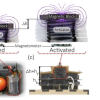 The need to create more viable soft sensors is increasing in tandem with the growing interest in soft robots. Several sensing methods, like capacitive stretch sensing and intrinsic capacitive self-sensing, have proven to be useful when controlling
The need to create more viable soft sensors is increasing in tandem with the growing interest in soft robots. Several sensing methods, like capacitive stretch sensing and intrinsic capacitive self-sensing, have proven to be useful when controlling Textbooks that provide a broad algorithmic perspective on the mechanics and dynamics of robots almost unfailingly serve students at the graduate level. Introduction to Autonomous Robots offers a much-needed resource for teaching third- and fourth-
Textbooks that provide a broad algorithmic perspective on the mechanics and dynamics of robots almost unfailingly serve students at the graduate level. Introduction to Autonomous Robots offers a much-needed resource for teaching third- and fourth-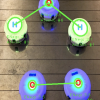 We present a novel augmented reality (AR) framework to show relevant information about swarm dynamics to a user in the absence of markers by using blinking frequency to distinguish between groups in the swarm. In order to distinguish between groups
We present a novel augmented reality (AR) framework to show relevant information about swarm dynamics to a user in the absence of markers by using blinking frequency to distinguish between groups in the swarm. In order to distinguish between groups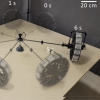 Locomotion through rolling is attractive compared to other forms of locomotion thanks to uniform designs, high degree of mobility, dynamic stability, and self-recovery from collision. Despite previous efforts to design rolling soft systems,
Locomotion through rolling is attractive compared to other forms of locomotion thanks to uniform designs, high degree of mobility, dynamic stability, and self-recovery from collision. Despite previous efforts to design rolling soft systems,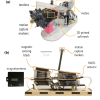 We present a suite of algorithms and tools for model-predictive control of sensor/actuator systems with embedded microcontroller units (MCU). These MCUs can be colocated with sensors and actuators, thereby enabling a new class of smart composites
We present a suite of algorithms and tools for model-predictive control of sensor/actuator systems with embedded microcontroller units (MCU). These MCUs can be colocated with sensors and actuators, thereby enabling a new class of smart composites NC: I see myself as a proponent of computation in the field of smart materials. But the word ‘smart’ is overloaded; there is also a lot of discussion about active materials. I created the term ‘robotic materials’ because I come from robotics and my
NC: I see myself as a proponent of computation in the field of smart materials. But the word ‘smart’ is overloaded; there is also a lot of discussion about active materials. I created the term ‘robotic materials’ because I come from robotics and my Soft robotics is a field of robotic system design characterized by materials and structures that exhibit large-scale deformation, high compliance, and rich multifunctionality. The incorporation of soft and deformable structures endows soft robotic
Soft robotics is a field of robotic system design characterized by materials and structures that exhibit large-scale deformation, high compliance, and rich multifunctionality. The incorporation of soft and deformable structures endows soft robotic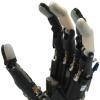 The lack of sensory feedback provided by prosthetic hands dramatically limits the utility of the device. Peripheral nerve interfaces are now able to produce stable somatosensory percepts for upper limb amputees. Sensors must be able to detect forces
The lack of sensory feedback provided by prosthetic hands dramatically limits the utility of the device. Peripheral nerve interfaces are now able to produce stable somatosensory percepts for upper limb amputees. Sensors must be able to detect forces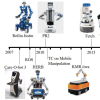 The Mobile Manipulation Hackathon was held in late 2018 during the IEEE/RSJ International Conference on Intelligent Robots and Systems (IROS) to showcase the latest applications of wheeled robotic manipulators. The challenge had an open format,
The Mobile Manipulation Hackathon was held in late 2018 during the IEEE/RSJ International Conference on Intelligent Robots and Systems (IROS) to showcase the latest applications of wheeled robotic manipulators. The challenge had an open format,

